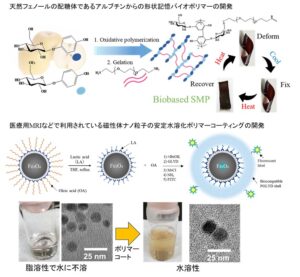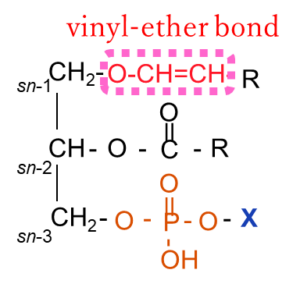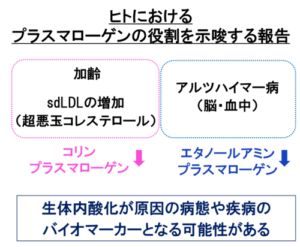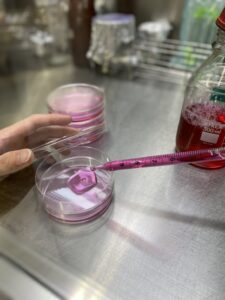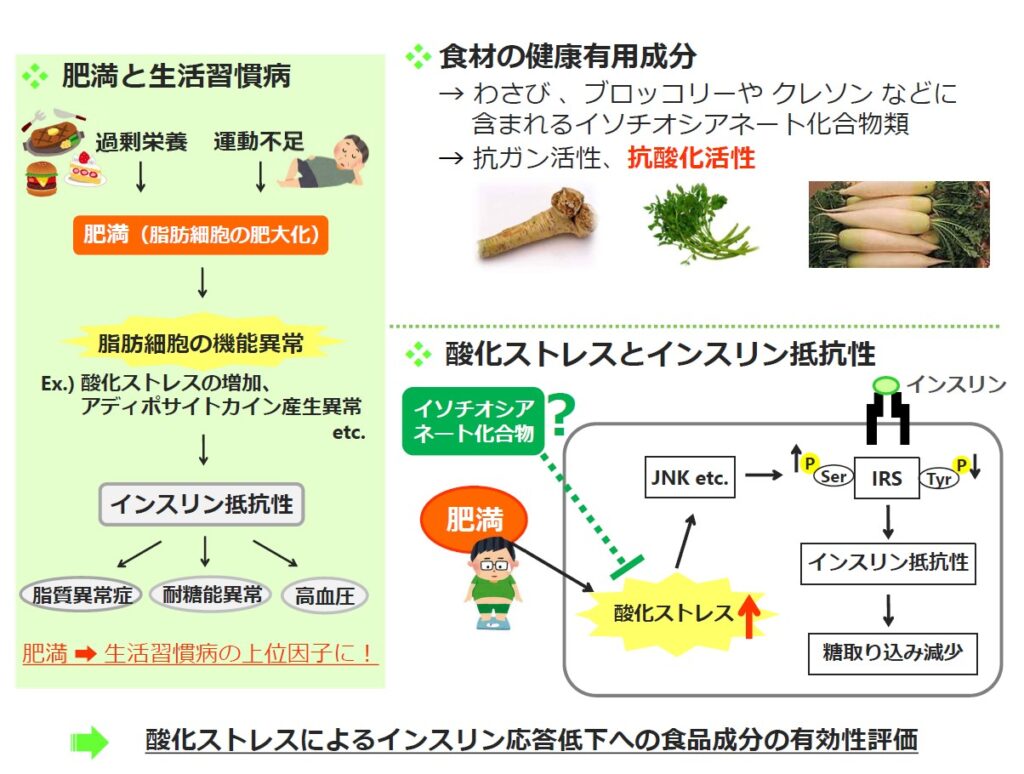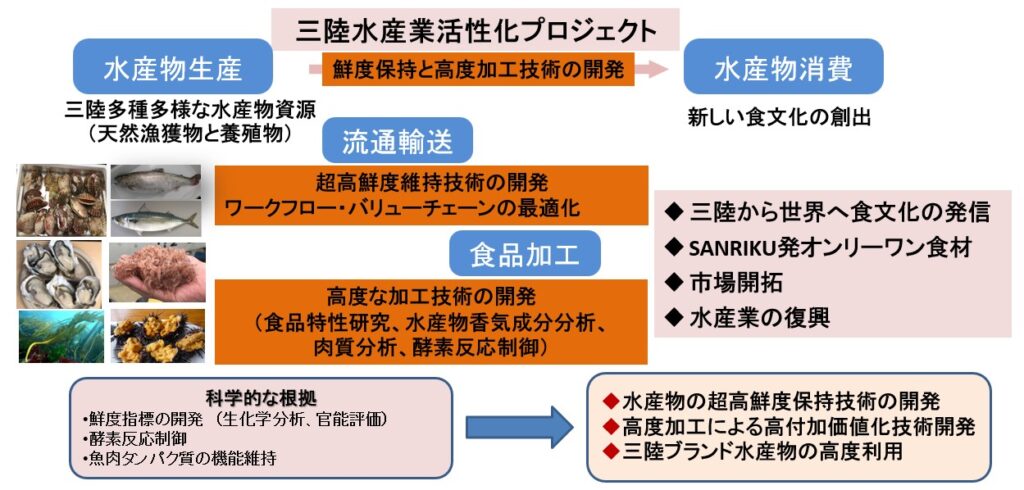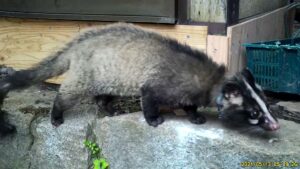![]() 次世代アグリイノベーション研究センター(AIC) 研究概要紹介/Introduction of Resarch Outline
次世代アグリイノベーション研究センター(AIC) 研究概要紹介/Introduction of Resarch Outline
![]() 生物生産部門
生物生産部門
微生物の力を活用した環境に優しい新技術づくり : 山田美和
世界的に地球環境保全に対する関心が高まっている中、微生物や生体触媒を利用した「ホワイトバイオテクノロジー」による物質生産が急速に発展しています。本研究では、目的の物質合成に適した微生物の探索から始まり、遺伝子組換え技術の利用、微生物細胞内における代謝ルートの新たな構築や改変を行って、目的の有用物質を効率よく生産できるようにチューニングすることを目指します。さらに、酵素の機能改変を通じて、さらなる高効率化や新たな物質生産へと展開します。これらの研究を通して、「創りながら中身を知る」、つまり合成メカニズムの解明も可能です。有用物質生産のターゲットとしては、医薬品、化成品原料や、バイオプラスチックに注目しています。これまで化学合成法で合成されてきた物質を微生物合成することによって、バイオプロセスだからこそ容易となる高品質なものづくりを目指しています。また、微生物によるものづくりの強みは、生物資源や純度の低い物質(例えば廃棄物など)を、直接原料として利用できる可能性があることです。よって、バイオマスや未利用資源を有効活用した環境低負荷型のシステムを構築し、地球の未来に明るい技術構築に貢献したいと考えています。
Development of new eco-friendly technology using ability of microorganisms : YAMADA Miwa
Amidst growing worldwide concern for global environmental conservation, the production of various materials through “white biotechnology” using microorganisms and biocatalysts is rapidly developing. In our research, starting with the search for microorganisms suitable for synthesizing the desired materials, we aim to tune them to efficiently produce the desired useful materials through the use of genetic recombination technology and the construction or modification of new metabolic routes in microbial cells. Furthermore, through functional modification of enzymes, we will further improve efficiency and develop new material production. Through these studies, it is possible to elucidate the synthesis mechanism. As targets for the production of useful materials, we are focusing on pharmaceuticals, chemical raw materials, and bioplastics. By using microorganisms to synthesize materials that have been synthesized by chemical synthesis methods, we aim to produce high-quality products that can be easily achieved only through bioprocesses. Another advantage of microbial synthesis is the possibility of directly utilizing biological resources and low-purity materials (e.g., waste) as raw materials. Therefore, we would like to contribute to the construction of technology that will brighten the future of the earth by building eco-friendly systems that make effective use of biomass and unused resources.
![]()
高分子科学と次世代の農業: 芝﨑祐二
私たちのくらしを支える高分子化合物は容器包装、日用雑貨、衣料品、機械部品、土木建築材料、漁船、航空機部品などに幅広く利用されています。高分子化合物は10 nm程度の長い一次元鎖状化合物であり、それらが複雑に絡み合うことでプラスチック、繊維、塗料として使われています。一方、現代の最先端科学を使えば高分子鎖1本を巧みに配置して、高分子鎖数十本から数百本程度からなる高分子ナノ粒子を調製することも可能です。このような知見に基づき、私たちの研究グループでは新規高分子化合物の設計、合成、評価を進めており、農業、林業、水産業に適用可能な材料開発も行っています。プラスチックでありながら、環境にやさしく、形状を記憶でき、摩擦や衝撃による破壊も自己修復してしまう高分子スマート材料は非常に魅力的な研究対象です。このような高分子科学の研究で、農業、林業、水産業に貢献していきたいと考えています。
Contributing to agriculture through polymer science : Yuji Shibasaki
Polymer is a famous material that support our daily lives, and widely used in containers, packaging, daily necessities, clothing, mechanical parts, civil engineering/construction materials, fishing boats, aircraft parts, and so on. Polymer is a long 1D chain with a length of approximately 10 nm, and are used in plastics, fibers, and paints because they are intricately intertwined each other. On the other hands, using modern cutting-edge science, it is also possible to prepare polymer nanoparticles consisting of dozens to hundreds of polymer chains by skillfully arranging a single polymer chain. Based on this knowledge, our research group focuses on the design, synthesis, and evaluation of novel polymer compounds, and is also developing materials that can be applied to agriculture, forestry, and fisheries. Although they are plastics like conventional polyethylene, some of them are environmentally friendly, can remember their shape, and self-repair from damage caused by friction or impact. These polymer materials are extremely attractive as research subjects. We hope to contribute to agriculture, forestry, and fisheries through this polymer science research.
![]()
亜熱帯原産のイネが雪の下で春を待つ!? 新技術「イネの初冬直播き栽培」 : 下野裕之
私たちの主食であるコメの生産現場は厳しさを増しており、持続可能な農業を後押しするため、常識に捉われない技術開発が望まれます。岩手大学では、低コスト・大規模化のための革新的技術として、亜熱帯原産であるイネを、寒冷・積雪地で降雪前に播種する「初冬直播き栽培」を2008年に提案し、実用技術化に向けて全国の大学、試験研究機関と連携し急ピッチで研究を進めています。これによりイネ栽培で最も忙しい春の作業を分散することにより低コストでの規模拡大が可能となり、農家の収益向上に貢献することが期待されます。「春」でなく「初冬」に播く、まったく新しいイネ栽培体系の確立を目指します。
技術化の壁とて、積雪下の土中での種子生存率、その向上のため,種子表層コーティング、植物ホルモン等による種子の休眠性、種子の透過性の制御、病害防除による種子越冬性の誘導、ならびに播種方法や耕起方法の組み合わせによる土壌物理環境の最適化の技術開発を行います。
New technology: Winter Direct-Seeding System (WDSS) of rice (Oryza sativa L.) in cool climates in Japan : SHIMONO Hiroyuki
To improve income of rice farmers in Japan, it is requested to reduce the cost for rice production with increase farm acreage. However, in the northern part of “Hokkaido”, “Tohoku” and “Hokuriku” regions of major rice producing areas in Japan, there is very narrow window for rice production because of limited capable growing season constraints of low temperature. It is required a challenging technology, “Out of the box” thinking.
We invented new method called “Winter Direct-Seeding System” of rice in cool climates (WDSS), that can extend the planting period without any additional inputs of machinery and operators, which result in huge cost. The WDSS system is characterized by seeding in winter and the seeds were kept under snow covered as a kind of “Natural Refrigerator”, taking advantage of direct seeding system. The system will give opportunities to farmers for increasing the farm acreage without additional costs.
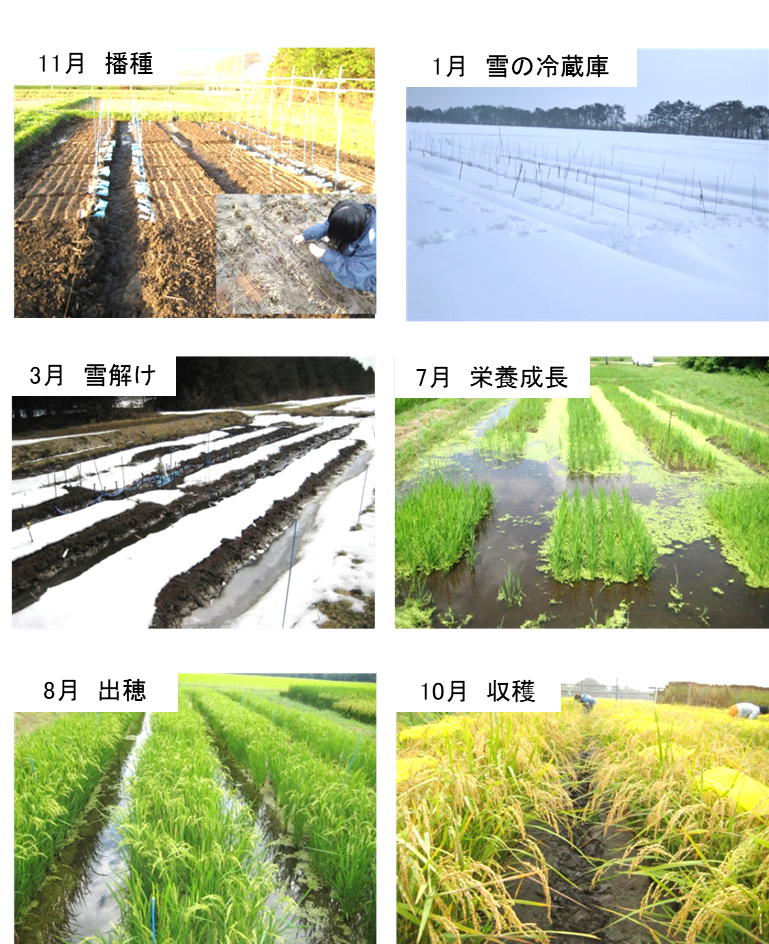
![]()
持続可能な食と農の未来へ:LCAによる農産物・食品の環境負荷の解析 : 折笠貴寛
現在,世界全体で人の消費向けに生産された食料のおおよそ3分の1,量にして年間約13億tが廃棄されています。このような背景から,農産物の収穫後損失に関連する食品ロス問題は,持続可能な社会を構築していく上で重要な課題であると世界中で認識されています。本研究では,収穫した農産物のポストハーベスト技術(包装,貯蔵,輸送,加工など農産物の収穫後に施される処理)に着目し,農産物や食品の環境負荷を国際的な環境影響評価手法であるライフサイクルアセスメント(Life Cycle Assessment, LCA)手法により解析し,環境負荷の見える化,環境負荷の排出源の特定,環境負荷削減シナリオの検討などにより,持続可能な食と農の在り方を探ります。
Towards a sustainable future for food and agriculture: Analysis of the environmental impacts of agricultural products and foods using LCA : ORIKASA Takahiro
Currently, approximately one-third of the food produced for human consumption in the world, or about 1.3 billion tons per year, is wasted. Against this background, the problem of food loss associated with post-harvest losses of agricultural products is recognized worldwide as an important issue for building a sustainable society. In this study, we focus on post-harvest technologies (post-harvest processing of agricultural products such as packaging, storage, transportation, and processing) and analyze the environmental impacts of agricultural and food products using the Life Cycle Assessment (LCA) method, an international environmental impact assessment method. The project aims to explore sustainable food and agriculture by quantifying environmental impacts, identifying the sources of environmental burdens, and examining environmental reduction scenarios.
![]() 食と生活部門
食と生活部門
体を守るリン脂質~抗酸化リン脂質プラスマローゲンの生理機能の解明 : 西向めぐみ
脂質は悪いイメージを持たれがちですが、私たちの体にとっては必要な成分でもあります。
プラスマローゲンは細胞膜の中に組み込まれているリン脂質の一種で、体内で合成されますが、肉や海産物など食事からも摂取しています。このプラスマローゲンの分子には「ビニルエーテル結合」という部分があり、この構造が抗酸化能をもち、私たちの体を酸化から守ってくれてます。酸化が原因とされてる動脈硬化症やアルツハイマー病では、このプラスマローゲンの体内の量が減っています。また、加齢でもプラスマローゲンが減ることが知られてます。病気と体内のプラスマローゲンの関係や、減ってしまったプラスマローゲンの量を回復させる食品素材の探求を行っています。
Phospholipids protect the body~Elucidation of the physiological functions of the antioxidant phospholipid plasmalogens : NISHIMUKAI Megumi
Lipids are necessary for our bodies, although they often get a bad rap. Plasmalogens are a type of phospholipid incorporated into cell membranes and synthesized by the body, although we also get plasmalogens from foods like meat and seafood. Plasmalogens have a “vinyl-ether bond” in their molecules, and this structure has antioxidant properties and protects our bodies from oxidation. The amount of plasmalogens in the body is reduced in atherosclerosis and Alzheimer’s disease, which are thought to be caused by oxidation. It is also known that aging also reduces plasmalogens. We are in search of the relationship between diseases and plasmalogens in the body and for food materials that can restore the decreased amount of plasmalogens in the body.
![]()
栄養や食品成分の健康機能性のメカニズムを探る : 伊藤芳明
超高齢社会の日本において、ライフスタイルや加齢に伴って増える生活習慣病や筋力の衰えによる活動力の低下は健康上の大きな関心事です。これらの健康リスクは、食事との関係は高いことから食事成分の利用による予防や改善は問題の解決に有効な手段の一つとなりえます。私は、こうした観点から食品や栄養成分による予防・軽減効果を実験動物や培養細胞を用いて研究を行っています。
生活習慣病の一つである糖尿病は、インスリン作用が不足して血糖値が恒常的に高くなる疾患です。その背景の一つに生体酸化ストレスの増加があります。わさび、クレソンやブロッコリーなどのアブラナ科植物には、生体の抗酸化性を高める効果のある成分が含まれており、これを酸化ストレスによりインスリン抵抗性を生じさせた脂肪細胞に作用させると抗酸化性が誘導されインスリン作用が改善することが分かりました。また、こうした成分は糖尿病動物の病態も改善することを見出しています。他にも食品や栄養成分による骨格筋の機能維持に関する研究を行っております。こうした食品成分などの健康有用性の解明に関する基礎的な研究から、農業分野における高機能な品種の改良などに繋がることを期待しています。
The mechanisms of health functionality of nutrients and food components : ITO Yoshiaki
In Japan, a rapidly aging society, non-communicable diseases that increase with lifestyle and aging, and the decline in physical activity due to muscle weakness are major health concerns. Since these health risks are highly related to diet, prevention and improvement through the use of dietary components can be an effective means of solving the problem. From this perspective, I am conducting research on the preventive and ameliorative effects of food and nutrients using experimental animals and cultured cells.
Diabetes mellitus is caused by insufficient insulin action, leading to chronically high blood sugar levels. One of the underlying factors is increased biological oxidative stress. Cruciferous vegetables such as wasabi, watercress, and broccoli contain compounds that enhance antioxidant capacity. It has been found that one of these compounds induces antioxidant activity in adipocytes developed insulin resistance by oxidative stress, leading to improved insulin action. Furthermore, the compound also showed ameliorative activity in diabetic animals. In addition, I have conducted research on the maintenance of skeletal muscle function through food and nutrient components. I hope that these basic research elucidating the health benefits of such food ingredients will lead to the development of high-functioning varieties in the future.
![]()
水産物の鮮度管理と高度加工利用技術の革新: 袁春紅
日本では当たり前のように食卓に並ぶ魚の刺身ですが、どこの国でも食べられるわけではありません。日本の豊かな水産資源と高い水産技術があってこそ実現しています。魚が獲れてから消費者のもとに届くまでには時間がかかりますが、鮮度が良い状態で風味を感じながら食べられるのは、鮮度管理の方法や冷凍・解凍技術のおかげです。例えばホタテは、グリコーゲンの量が増える夏が食べ頃で、その状態を保てる適切な温度があります。劣化が早い牡蠣も、今ではチルド保存によって1カ月間鮮度を保つことができ、海外へ輸出されるようになりました。このような魚介類の成分変化や保存に適した温度は、種類ごとに分析されるべきです。また、水産物の鮮度を管理するためには、鮮度指標の確立と鮮度を測定するための技術開発が必要です。
一方、魚介類に含まれる機能成分を失わずに、栄養価が高いまま提供できる水産食品加工技術の開発も非常に重要です。科学的に確立された鮮度管理や加工技術の開発は、限りある水産資源を無駄にせず、より多くの消費者に届けることを可能にします。これにより、食糧の安定確保や食品ロスの問題解決にもつながるでしょう。また、昨今は人生100年時代と言われ、健康への注目がますます高まっています。栄養価の高い水産物の流通を増やすことはもちろん、加工した新商品の開発や、健康機能性の高い食品の製造は、長寿社会への貢献にも寄与するのです。以上のように、三陸ブランド水産物を高品質、適正な価格で消費者にお届けするため、魚介類の鮮度維持、高品質化の技術研究を行っています。
Precision Quality Management and Advanced Processing Utilization Technology Innovation in Marine Products : Chunhong YUAN
In Japan, fish sashimi is a common sight on dining tables, but it is not something that can be enjoyed in every country. This is made possible by Japan’s abundant marine resources and advanced fishing technologies. From the time the fish are caught until they reach the consumer, a considerable amount of time elapses. The ability to enjoy them with optimal freshness and flavor is due to sophisticated freshness management methods and advanced freezing and thawing technologies. For instance, scallops are at their best in the summer when their glycogen levels are high, and there is an optimal temperature to maintain this state. Oysters, which deteriorate quickly, can now maintain their freshness for a month through chilled storage, making it possible to export them overseas. The change in the composition of such seafood and the temperature suitable for storage should be analyzed for each type. In addition, in order to manage the freshness of marine products, it is necessary to establish freshness indicators and develop technologies to measure freshness.
On the other hand, it is also extremely important to develop seafood processing technologies that can provide high nutritional value without losing the functional components contained in seafood. Scientifically established freshness management and processing technologies make it possible to deliver limited marine resources to more consumers without waste. This contributes to stable food supply and solving food loss issues. Additionally, as we enter an era where people are expected to live to 100 years, there is increasing attention on health. Increasing the distribution of inherently nutritious seafood and developing new processed products with high health functionality also contribute to a long-lived society.
![]() 生態環境部門
生態環境部門
人間と野生動物の関係の再構築: 原科幸爾
人間と野生動物の関係は、時代や環境によって目まぐるしく変化しています。岩手県では、かつて保全対象だったニホンジカが増えて分布を拡大して農林業被害を引き起こしたり、ツキノワグマが人里に出没するなど人間との軋轢を生じています。
このような問題を解決するために、主に空間的な視点から人間と野生動物の共存を目指した研究を行っています。広域的には野生動物の地理的分布と生息環境の関係の解明(ニホンジカ、ニホンリス)や分布拡大予測(ニホンジカ)、局所的には都市に生息する野生動物(ニホンリス、ハクビシン)の行動追跡による生息地利用について調べています。さらに、狩猟活動やジビエ利用の可能性にも着目しています。これらの研究を通して、人間と野生動物の空間的な住み分けのための方策や被害対策、資源利用といった点から、両者の関係の再構築を目指して研究しています。
Reconstructing the Relationship Between Humans and Wildlife : HARASHINA Koji
The relationship between humans and wildlife has undergone dramatic changes over time and across different environments. In Iwate Prefecture, the once-conserved Japanese deer have increased in number and expanded their distribution, causing damage to agriculture and forestry. Additionally, Asiatic black bears have started to appear in human settlements, leading to conflicts with humans.
To address these issues, research is being conducted primarily from a spatial perspective with the aim of achieving coexistence between humans and wildlife. On a broad scale, this involves elucidating the relationship between the geographic distribution and habitats of wildlife (such as the Japanese deer and Japanese squirrel) and predicting the expansion of their distribution (specifically for the Japanese deer). On a local scale, the research focuses on habitat utilization through tracking the behavior of urban-dwelling wildlife (such as the Japanese squirrel and masked palm civet). Furthermore, there is an emphasis on the potential of hunting activities and the use of game meat.
Through these studies, the aim is to reconstruct the relationship between humans and wildlife by devising strategies for spatial segregation, damage control, and resource utilization.
Estimation of the habitat range of Japanese deer in Iwate Prefecture
A masked palm civet equipped with a GPS collar
![]()
動物との共生社会を目指して : 出口善隆
野生動物による農作物被害の増大、動物福祉への配慮を欠いた動物の飼育、集約畜産による家畜の健康性への影響など、ヒトと動物との間で様々な問題が生じています。動物たちの行動から、ヒトと動物との関係の中で生じた問題を理解し、解決することを研究のテーマとしています。
野生動物では、ヒトの生活圏近くに生息する野生動物(都市近郊林に生息するニホンリスや、アナグマなど)の行動を調査して、行動と野生動物の生息地環境との関係を調べています。農林業被害を与える野生動物(イノシシ、シカ、カモシカなど)の行動調査も行っています。展示動物(トナカイ、クマなど)では、飼育環境が動物に与える影響や、野生下での調査が難しい行動について飼育下動物を利用して研究しています。それらのデータを基にした展示動物の飼養管理手法の検討なども行っています。産業動物では、ウシの林間放牧研究など、日本の環境と調和した放牧技術を継承しつつ、新たな省力型放牧管理についての研究を行っています。これらの調査や研究を通して、ヒトと動物がともによりよく暮らしてゆける社会の構築を目指しています。
Aiming for a symbiotic society with animals : Yoshitaka Deguchi
Various problems are occurring between humans and animals, such as increased damage to crops by wild animals, raising animals without consideration for animal welfare, and the impact of intensive livestock farming on the health of livestock. The theme of my research is to solve problems that arise in the relationship between humans and animals based on the behavior of animals.
We are investigating the behavior of wild animals that live in human habitats (such as Japanese squirrels and badgers that live in urban forests). We also investigate the behavior of wild animals (wild boars, deer, serows, etc.) that cause crop damage. We study the effects of the breeding environment on zoo animals (reindeer, bears, etc.) and the behaviors that are difficult to study in the wild. We are also researching new labor-saving grazing management methods such as forest grazing for cattle. Through these surveys and research, we aim to build a society where both humans and animals can live better together.

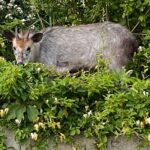
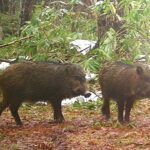
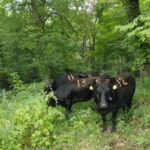
![]()
森林資源の効率的な活用と林業の持続的な発展に向けて: 齋藤仁志
森林資源を適切に活用していくためには、森林を育てるだけでなく、伐採収穫を行う必要があります。そのためには安全性、経済性が確保されていることが重要です。効率的作業を行える大型の林業機械を、どこで、どのようにして利用することが効率的か明らかにする必要があります。そこで、UAV/LiDR等のICT技術を用いて得られた森林の三次元情報から、生産性を予測するモデルを検討し、効率的に生産ができる現場を提示する技術を開発しています。このような研究を通じて、地域の基盤産業である林業が持続的に行える環境づくりを目指しています。
Aiming for Efficient use of forest resources and sustainable development of forestry : SAITO Masashi
To effectively utilize forest resources, it is crucial not only to cultivate forests but also to carry out harvesting. Ensuring safety and economic efficiency is essential in this process. It is necessary to determine where and how to use large-scale forestry machinery to perform tasks efficiently. To achieve this, we are developing a technology that uses UAV (Unmanned Aerial Vehicle) and LiDAR (Light Detection and Ranging) to collect three-dimensional information about forests and predict productivity. This model will help identify sites where efficient production can be achieved. Through this research, we aim to create an environment that allows the local foundational industry of forestry to be sustainable.
![]() データサイエンスG
データサイエンスG
マルチスペクトルセンサーで空撮した波長画像群から実験水田を復元する研究 : 木村彰男
マルチスペクトルセンサーを搭載した小型無人航空機で空撮した実験水田の画像群からイネの形状を復元し、その復元された形状データに基づいてイネの収量等の形質パラメータを推測するための技術開発に取り組んでいます。このような、情報技術を駆使した省力化目的の研究は他にもいくつか存在しますが、通常のRGBカラー画像を用いる従来の方法では、形質の予測にはほぼ関連しない葉や土まで大量に復元されてしまい、予測がうまく機能しない、という課題がありました。そこでこの研究では、ある特定波長帯の波長画像群に着目し、これらを復元時のマスク画像に利用する形でこの問題に対処しています。その結果、刈り入れ直前期の9月中旬では、Red帯(680nm付近)の波長画像とイネの穂部に強い相関があり、このRed帯の波長画像を復元に利用すると、復元された点の数と、実際に手動で測定した登熟籾数や収量15%水分値などの形質パラメータに一定の相関が認められることが明らかになっています。
この研究を進め、さらに精度の高い形状復元を実現できたとしたら、その復元結果から例えば収量に直結するような形質パラメータを予測できると考えられ、大幅な省力化や効率化が見込めます。
A study to 3D reconstruction of experimental rice fields from a set of wavelength images captured by a drone equipped with a multispectral sensor : KIMURA Akio
We have been engaging in 3D reconstruction of the entire experimental rice field, based on images captured by a small drone equipped with a multispectral sensor. This reconstruction is intended to facilitate the prediction of various rice trait parameters, including rice yield. Other studies have also employed IT to reduce the need for manual labor, however, the conventional method, which uses normal RGB color images, has a limitation: it reconstructs a significant number of leaves and soil, which are irrelevant to trait prediction. This research addresses the aforementioned issue by focusing on wavelength images within a specific wavelength band and utilizing them as mask images for 3D reconstruction. Consequently, a strong correlation is observed between the red band image (approximately 680 nm) and the rice panicles in mid-September, just before the harvest period, and utilizing the red band wavelength image for 3D reconstruction demonstrated a correlation between the number of 3D reconstructed points and the manually measured trait parameters, including the number of ripening paddies.
As the research progresses, it will become possible to predict traits that affect yield. This will result in a reduction in the amount of labor required and an improvement in efficiency.
センターで過去に行った研究はこちらからご覧いただけます。


